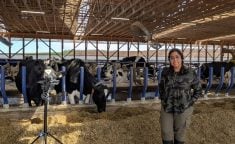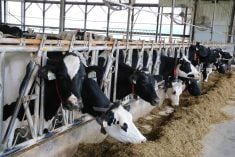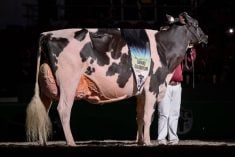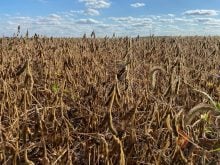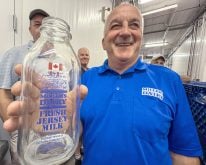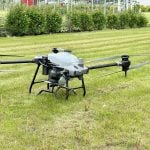Increasing dairy herd longevity isn’t a cut-and-dried formula.
Why it matters: There is no silver bullet for making culling decisions. Factors such as production, fertility and replacement rate, along with other cow-specific and economic metrics all influence culling decisions.
“I don’t really have an easy formula that says, ‘this is what you have to do,’” Albert De Vries, a University of Florida Department of Animal Studies professor, told attendees at Grey Bruce Farmers’ Week Dairy Day in January. “(As an industry) we have everything down. We’re good at nutrition, good at forages, but when it comes to these decisions, a little bit of work needs to be done.”
Read Also
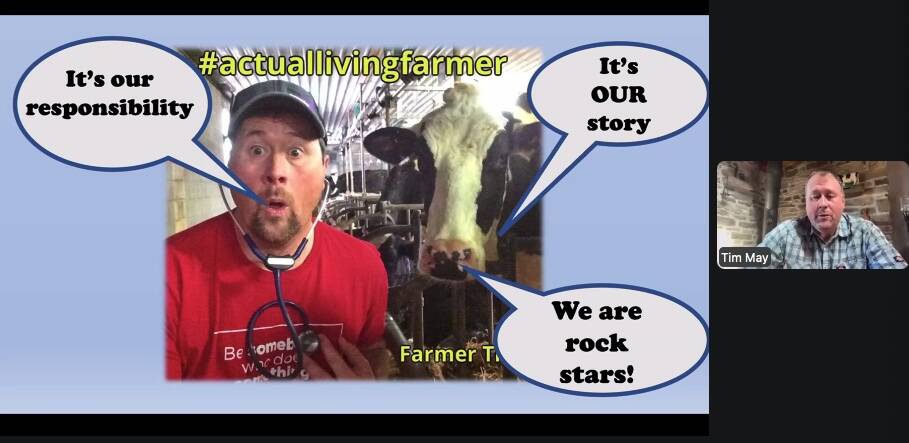
How stories promote farm safety
Speakers at CASA online conference explain how personal stories can be more valuable than statistics in communicating importance of farm safety
De Vries’ research focuses on culling and replacement strategies, reproduction and genetic economics and precision dairy farming. Recently, Dairy Records Management Systems licensed and marketed his ‘KeepOrBeef’ algorithm for culling decisions.
De Vries said genetically, cows have gained 12 extra months of production from the 1990s and can stay longer in the herd. However, illness, lameness, reproductive issues, poor conformation, bad temperament or low milk yield in a highly competitive herd contribute to early culling decisions.
He explained that high-producing cows pay for themselves within the first year of production. In contrast, average to low-producing cows break even approximately mid-way through their second or third lactation.
“How long should she stay in the herd? Until she pays for herself? That’s the wrong way to look at this,” he suggested.
If a cow costs $1,700 from birth until she calves, as a high producer, she pays for herself in the first lactation before she goes dry. An average and low-producing cow doesn’t achieve that until mid-second or third lactation, respectively.
“It’d be a mistake to hang on to that low-producing cow longer because she hasn’t paid for herself,” De Vries said. “She needs to compete for her spot on the team. We have to make it practical at the end of the day, not the cow by itself, but the competition she lives with.”
Measuring Merit
Ben Loewith, a third-generation dairy farmer and co-owner of Joe Loewith & Sons Ltd and Summit Station Dairy, an on-farm processing facility that produces fluid and flavoured milk as well as cheese curds, aims to maintain an involuntary cull rate below 11 per cent. Of the 480 cows milked three times daily, approximately 52 per cent are in their third lactation or greater, and the average milk production is 49 kilograms per cow.
“Our involuntary cull rate is nine per cent, with a total cull rate of about 30 per cent. I never use that (total cull rate) as a goal,” he said. “(The involuntary cull rate) is a representation of my ability to keep cows on the farm.”
Loewith said he never culls or keeps a cow because she is old. Instead, he measures the individual merits of each animal against his goal of efficiently fulfilling his quota with the fewest cows.
“We have about 21 per cent in fifth lactation or greater,” he explained. “Of the 500 cows on the farm right now, we have 25 cows that have produced over 100,000 kilograms, which is about 4.6 per cent of the herd.”
Loewith tries to determine a cow’s future potential value as a culling metric and tracks the total milk production of those who leave the farm, whether a heifer in her first days of milk or a ninth lactation cow. It also shows the number sold to manage inventory.
If a cow enters the low-labour hospital pen due to lameness or calving trouble, Loewith doesn’t mind giving them time, but if the animal isn’t recovering after two weeks, he’ll cull it.
Managing heifer inventory according to their facility means 15 heifer calves are born a month to minimize the pressure of 10 new heifers calving when he doesn’t need the milk.
Monitor costs
De Vries said if you make relatively accurate cash flow projections for cows, it can tell you, at least on paper, when cows should leave. In reverse, it would indicate your placement rate and how many heifers you need.
“You can hang on to some cows too long and be less profitable than with high replacement rates,” he said. “But it depends on a lot of input factors, like heifer prices, a little bit on milk prices, feed costs and so on.”
If the cost of raising heifers and their market value are low, a 50 per cent replacement rate is affordable, but combined with increased heifer prices and high replacement rates, profitability drops.
“I wouldn’t worry too much, frankly, (about replacement rates) whether it’s 35 or 32 per cent, or 35 or 38 per cent,” De Vries surmised. “If you make sound decisions, there are more important things you worry about than what should be my ideal replacement rate.”
Investing in genetics
Chris McLaren, owner of Larenwood Farms, ensures they get the maximum output per cow per stall by investing in genetics and infrastructure like automatic calf feeders and accelerated calf growth.
“Getting 10–12–14 litres per day, per calf of intake translates to more milk production later on and longevity in that calf,” he said, adding he built a new heifer barn, which decreased overcrowding, improving overall animal comfort. Over the last few years, they’ve focused on flushing high-end cows, utilizing lower-end heifers as recipients, and selling them off after calving.
“We’re trying to remain closed. We haven’t bought a cow in 70 years,” McLaren explained. “The idea is investing in better and better genetics internally will get us more milk production and longevity later on according to those formulas.”
He no longer breeds heifers less than 13 months, no matter the size, learning early on they don’t produce well at the end of their first and part of their second lactations, leaving money on the table.
Turnover because of the recipients has been higher in the last couple of years. However, McLaren said they’ve seen a nearly 1,000-litre improvement from first-lactation animals, and their average milk production is 48 kilograms.
“I breed not just for herd life. I breed for functional confirmation. I breed for production,” McLaren said. “You have to be bred for health traits as well. The ideal cow for me is a three-event cow. You calve, you get bred, you get dried off.”
For McLaren, the second part of longevity is proactive and preventative management, whether facility design, investing in vaccinations, nutrition, genetics or essential stall maintenance to ensure a healthier, low-stress environment. He said everything is interconnected, so if you breed for lower mastitis but don’t maintain barn cleanliness, you won’t reap the benefits.
“For longevity, it’s mostly about small improvements over time, picking low-hanging fruit, picking the biggest hole in your bucket, and plugging that first, and then look at the bucket again,” said McLaren.




